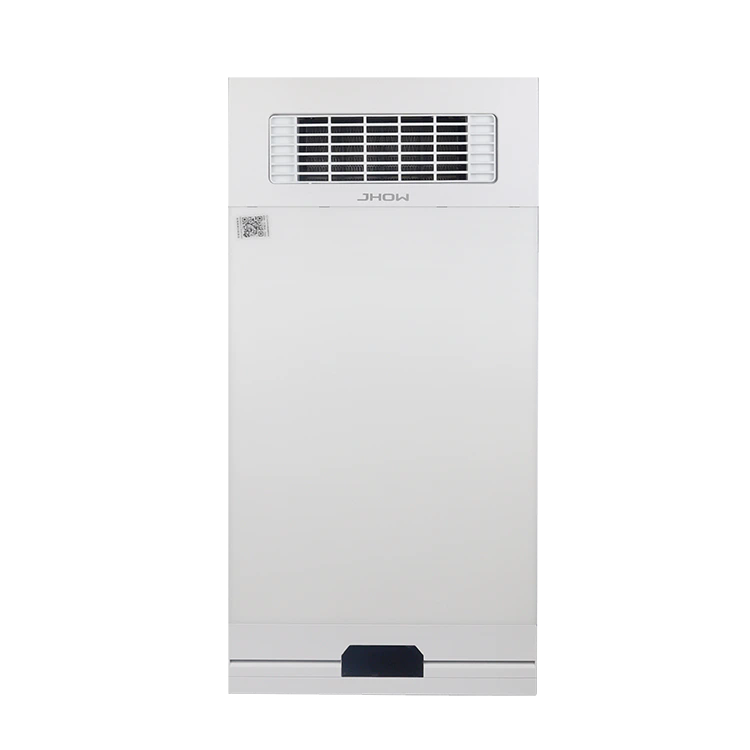What Makes General Lighting a Cornerstone of Modern Spaces?
2025-08-06
General lighting is the backbone of any well-designed space, providing the foundational illumination that enables daily activities, enhances mood, and shapes the functionality of environments. From homes and offices to retail stores and industrial facilities, general lighting goes beyond mere brightness—it creates ambiance, supports productivity, and contributes to overall well-being. As technology advances and sustainability becomes a global priority, modern general lighting solutions have evolved to meet diverse needs, combining energy efficiency, versatility, and smart features. This guide explores what defines effective general lighting, its role in different spaces, detailed specifications of our top products, and answers to common questions, highlighting why it remains essential in contemporary design.
Trending News Headlines: Top Searches on General Lighting
- "2024’s Most Energy-Efficient General Lighting Solutions"
- "How Smart General Lighting Transforms Home and Office Spaces"
- "Best General Lighting for Small Rooms: Maximizing Brightness"
These headlines underscore the practical and aesthetic priorities of consumers and businesses: energy savings, adaptability to space constraints, and integration with smart technology. As general lighting continues to evolve, these factors remain central to its role in modern living and working environments.
What Defines Effective General Lighting?
Uniform Illumination
The primary purpose of general lighting is to light an entire space evenly, eliminating dark spots and shadows that can hinder visibility or create an uncomfortable atmosphere. In a living room, for example, uniform lighting ensures that reading, conversation, or watching TV can be enjoyed without straining the eyes. In an office, it supports focused work across desks, reducing eye fatigue and improving productivity. Effective general lighting achieves this through strategic placement of fixtures—such as ceiling-mounted lights, recessed downlights, or track lighting—that distribute light evenly throughout the area. The goal is to create a balanced glow that covers every corner, making the space feel open and inviting.
Appropriate Brightness Levels
Brightness, measured in lumens, must be tailored to the intended use of the space. A bedroom requires softer, lower brightness (200-400 lumens per square meter) to promote relaxation, while a kitchen or workspace needs higher brightness (500-800 lumens per square meter) to support detailed tasks. General lighting that is too dim can cause eye strain, while excessive brightness can create glare and discomfort. Modern general lighting solutions often include dimming capabilities, allowing users to adjust brightness levels to suit different activities or times of day. This flexibility ensures that the lighting remains effective in various scenarios, from energetic morning routines to calm evening relaxation.
Color Temperature and Quality
Color temperature, measured in Kelvin (K), plays a significant role in setting the mood of a space and influencing human behavior. Warm white light (2700K-3000K) creates a cozy, inviting atmosphere, making it ideal for living rooms, bedrooms, and restaurants. Cool white light (4000K-5000K) promotes alertness and focus, making it suitable for offices, kitchens, and retail spaces where clarity is important. Neutral white light (3500K-4000K) strikes a balance, working well in spaces like hallways, bathrooms, or multi-purpose rooms.
In addition to color temperature, light quality—measured by the Color Rendering Index (CRI)—is crucial. A high CRI (90+) ensures that colors appear natural and true to life, which is essential in retail settings where accurate color perception influences purchasing decisions, and in art studios or design offices where color accuracy is critical. General lighting with poor CRI can distort colors, leading to misperceptions and reducing the overall quality of the space.
Energy Efficiency
With growing awareness of environmental sustainability and rising energy costs, energy efficiency has become a key feature of effective general lighting. LED technology has revolutionized this aspect, consuming up to 80% less energy than traditional incandescent bulbs and lasting significantly longer (50,000+ hours compared to 1,000 hours for incandescents). This not only reduces electricity bills but also minimizes the frequency of bulb replacements, lowering maintenance costs and environmental impact. Energy-efficient general lighting often includes features like motion sensors or smart controls that automatically turn lights off when a space is unoccupied, further optimizing energy use. For businesses and homeowners alike, this combination of cost savings and sustainability makes energy efficiency a non-negotiable factor in choosing general lighting.
Versatility and Adaptability
Modern spaces serve multiple purposes, and general lighting must adapt accordingly. A home office may function as a workspace during the day and a reading nook in the evening; a conference room may host formal meetings, casual brainstorming sessions, or video calls. Effective general lighting systems are versatile, with adjustable fixtures, dimming options, or interchangeable components that allow users to modify the lighting to suit different activities. Track lighting, for example, lets users reposition fixtures to highlight specific areas, while smart bulbs can change color temperature or brightness via a smartphone app. This adaptability ensures that the lighting remains functional and relevant as the needs of the space evolve.
How Is General Lighting Designed and Optimized for Different Spaces?
Assessment of Space and Needs
The first step is to evaluate the space’s dimensions, layout, and intended use. For a retail store, the focus may be on highlighting products while creating a welcoming atmosphere for customers. For a hospital, lighting must support patient recovery, staff productivity, and safety. Factors such as ceiling height, wall colors (light colors reflect more light, while dark colors absorb it), and the presence of natural light are also considered. This assessment helps determine the required brightness, color temperature, and fixture placement.
Selection of Fixture Types
Based on the space assessment, appropriate fixture types are chosen to deliver uniform illumination. Common general lighting fixtures include:
- Recessed Downlights: Installed into ceilings, these provide a clean, unobtrusive look and are ideal for rooms with low ceilings. They distribute light evenly and work well in kitchens, hallways, and offices.
- Ceiling Fixtures: Chandeliers, pendant lights, and flush-mount fixtures serve as both functional lighting and design elements. They are popular in living rooms, dining areas, and entryways, adding style while illuminating the space.
- Track Lighting: Adjustable fixtures mounted on a track, allowing for flexible positioning. They are suitable for galleries, retail spaces, or rooms where lighting needs to be directed at specific areas.
- Panel Lights: Slim, flat fixtures that fit into drop ceilings, providing uniform, glare-free light. They are commonly used in offices, schools, and commercial buildings.
Integration of Technology
Modern general lighting often incorporates technology to enhance efficiency and usability. LED bulbs are standard, offering long lifespans and energy savings. Smart lighting systems, controlled via apps or voice commands, allow users to adjust brightness, color temperature, and schedules remotely. Motion sensors and daylight sensors ensure lights are only on when needed, reducing energy waste. For commercial spaces, lighting management systems can monitor and adjust lighting across multiple areas, optimizing energy use and maintenance.
Testing and Optimization
Before final installation, lighting plans are tested using computer simulations or physical prototypes to ensure they meet the required brightness and uniformity. Adjustments are made to fixture placement, wattage, or lens design to address any issues. For example, if a corner of a room is too dark, additional fixtures or higher-lumen bulbs may be added. This testing phase ensures that the general lighting performs as intended, creating a comfortable and functional environment.
Our General Lighting Product Specifications
|
Parameter
|
LED Recessed Downlight (Model YJ-RD-01)
|
Smart Ceiling Panel Light (Model YJ-SP-02)
|
Track Lighting Kit (Model YJ-TK-03)
|
|
Light Source
|
12W LED chip
|
24W LED panel
|
10W LED per track head (3 heads included)
|
|
Lumen Output
|
1,200 lumens
|
2,400 lumens
|
1,000 lumens per head
|
|
Color Temperature
|
3000K (warm white) / 4000K (neutral white) / 6500K (cool white)
|
2700K-6500K (adjustable via app)
|
3000K / 4000K (selectable)
|
|
CRI
|
≥90
|
≥95
|
≥90
|
|
Power Source
|
AC 110-240V
|
AC 110-240V
|
AC 110-240V
|
|
Dimming
|
Yes (0-100% TRIAC dimming)
|
Yes (0-100% via app or voice control)
|
Yes (0-100% via dimmer switch)
|
|
Smart Features
|
No
|
Wi-Fi/Bluetooth connectivity, compatible with Alexa/Google Home, scheduling
|
No
|
|
Material
|
Aluminum housing, PC diffuser
|
Aluminum frame, PMMA diffuser
|
Aluminum track and heads, glass lens
|
|
Dimensions
|
Φ150mm x H70mm
|
600mm x 600mm x 12mm
|
Track length: 1200mm; head: Φ80mm x H100mm
|
|
Lifespan
|
50,000 hours
|
60,000 hours
|
50,000 hours
|
|
Installation
|
Recessed (ceiling cut-out: Φ140mm)
|
Drop ceiling or surface-mounted
|
Ceiling-mounted track
|
|
Certifications
|
CE, RoHS, ETL
|
CE, RoHS, FCC, ETL
|
CE, RoHS, ETL
|
|
Warranty
|
5-year warranty
|
5-year warranty
|
3-year warranty
|
All our general lighting products undergo rigorous testing to ensure they meet international standards for safety, efficiency, and performance. We prioritize energy efficiency in every design, helping customers reduce their carbon footprint and operating costs.
FAQ: Common Questions About General Lighting
At JHOW we are committed to delivering high-quality general lighting solutions that combine performance, durability, and innovation. Our range of recessed downlights, smart panel lights, and track lighting kits are designed to meet the diverse needs of any space, ensuring optimal illumination while reducing energy consumption. Whether you’re upgrading a home, office, or retail store, our products are engineered to provide reliable, long-lasting value.



